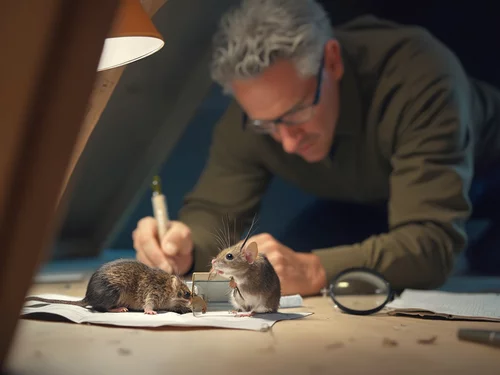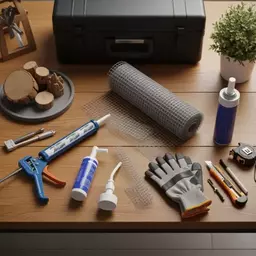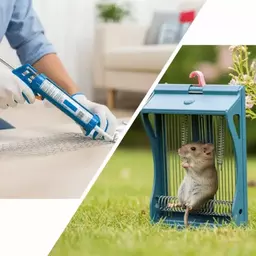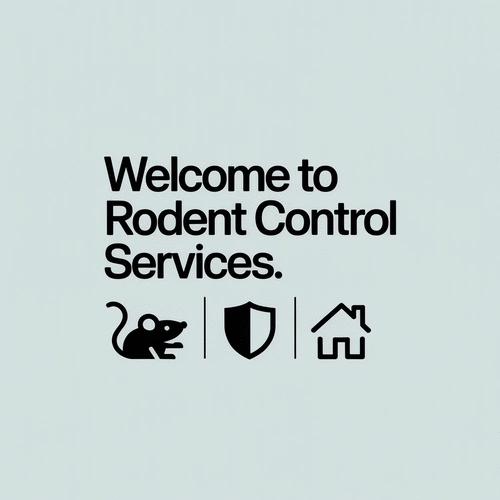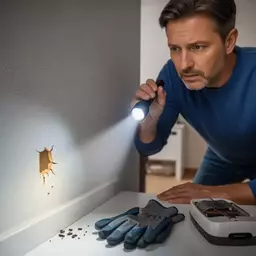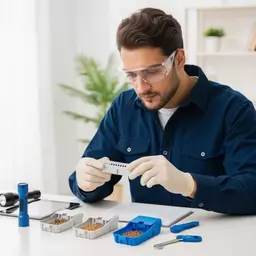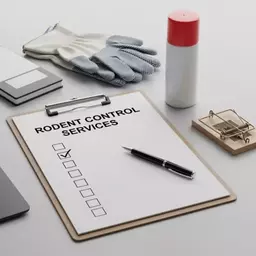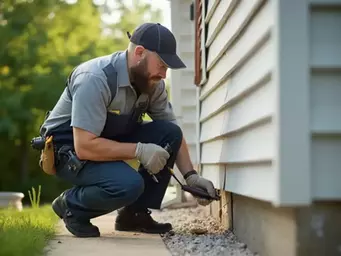Have you ever considered the hidden dangers lurking in your home? Rodent infestations can lead to serious health risks and property damage before you even realize they are there. Understanding the importance of early detection could save you from costly repairs and health hazards.
What You Will Learn
- Health Risks: Rodents can transmit serious diseases through droppings, urine, and bites.
- Property Damage: They can chew through wires and structural elements, leading to expensive repairs.
- Food Safety Concerns: Rodents can contaminate food supplies, posing health risks to you and your family.
- Identifying Infestations: Recognizing droppings and other signs can help you act before the problem escalates.
- Immediate Response Actions: Learn how to inspect, seal entry points, and set traps effectively.
- Sanitation Practices: Implementing cleaning and food storage strategies reduces the risk of future infestations.
Rodent Infestation Indicators & Responses
Understanding the signs of rodent activity and knowing how to react is crucial for effective pest management. This visual outlines key indicators and a 3-step response process.
Key Indicators of Rodent Infestation
- • Droppings: Small (rice-grain) for mice, larger (¾-1 inch) for rats.
- • Gnaw Marks: On wires, wood, or food packaging.
- •Nests: Piles of shredded materials in hidden areas.
- • Scratching Noises: Especially at night in walls or attics.
3-Step Response to Rodent Signs
Understanding Rodent Infestation: Why Early Detection Matters
When it comes to keeping your home or business safe, understanding rodent infestation is crucial. Early detection can make all the difference in managing a potential problem before it spirals out of control. Have you ever noticed signs of rodents and wondered what risks they pose? Let’s dive into the risks of rodent infestations and why it’s essential to address them promptly.
Recognizing the Risks of Rodent Infestations
Rodent infestations can lead to several serious complications. Not only are they a nuisance, but they also bring significant health hazards and potential damage to your property. Here are some of the key risks associated with rodent presence:
- Health Hazards: Rodents can transmit diseases through their droppings, urine, and bites.
- Property Damage: Chewing on wires, insulation, and wood can lead to costly repairs.
- Food Contamination: They can contaminate food supplies, posing risks to health and safety.
By recognizing these risks early, you can take steps to protect your property and health.
Health Hazards Associated with Rodent Presence
Rodents, like mice and rats, can carry various diseases that pose serious health risks. For instance, they are known carriers of hantavirus, leptospirosis, and salmonella. The CDC provides comprehensive information on rodent control and associated health risks, emphasizing the importance of preventing infestations. Have you ever thought about the potential health risks lurking in your space? Understanding these hazards can motivate you to take preventative measures.
It's not just about the diseases themselves; the presence of rodents may trigger allergies or asthma in sensitive individuals. So, keeping them at bay is not just a matter of comfort but also health!
Property Damage: How Rodents Can Compromise Your Home
One of the less obvious risks of rodent infestations is the potential for property damage. Rodents have strong teeth designed for gnawing, which means they can easily chew through wires, insulation, and even structural components of your home. Imagine the headaches that come with costly repairs from a rodent problem! The EPA offers guidelines on identifying and preventing rodent infestations, including tips on securing your home against these destructive pests.
It's essential to act swiftly if you suspect rodent activity in your property. The sooner you address the problem, the less damage you will likely incur.
Food Contamination: The Hidden Dangers of Rodent Activity
Did you know that rodents can contaminate food supplies with their droppings and urine? This hidden danger can lead to serious health issues if consumed unknowingly. The risk is especially high in kitchens and pantries where food is stored or prepared. Organizations like the National Park Service highlight various rodent-borne diseases, underscoring the severity of food contamination by these pests.
As a pest management expert, I always emphasize the importance of proper food storage and sanitation to mitigate these risks. Keeping your space clean is a vital part of preventing rodent infestations!
Key Indicators of Rodent Infestation
Now that we understand the risks, let’s look at some key indicators that can help you identify a rodent infestation early. By knowing what to look for, you can take action before the situation escalates.
Identifying Droppings: Mouse vs. Rat
One of the first signs of a rodent problem is droppings. But how can you tell whether you’re dealing with mice or rats? Understanding the differences is key!
- Characteristics of Mouse Droppings: Mouse droppings are small, about the size of a grain of rice, and have pointed ends.
- Understanding Rat Droppings: Rat droppings, particularly from Norway rats, are larger, around ¾ to 1 inch, and have a more blunt end.
- Excrement Characteristics: The color and texture can differ, with fresh droppings being dark and shiny, while older ones are lighter and dry.
Being able to identify these droppings can help you determine the species and the necessary steps to take for control.
Characteristics of Mouse Droppings
As I mentioned earlier, mouse droppings are typically small and pointed. If you find them in your home, it’s a clear indicator that mice are nearby. Acting quickly is crucial in these situations to prevent further infestations.
Regular inspections can help you stay ahead of any potential issues and maintain a rodent-free environment.
Understanding Rat Droppings: Norway and Roof Rat Differences
On the other hand, if you notice larger droppings, you might be dealing with a rat infestation. Norway rats generally leave behind droppings that are thicker and more cylindrical. Roof rats, while similar in size, have a slightly different shape. Knowing these differences can help you respond appropriately!
Remember, the sooner you can identify and confirm the type of rodent, the faster you can implement effective control measures.
Excrement Characteristics: What Rodent Droppings Reveal
In addition to size and shape, the location of the droppings can also provide insights into the level of activity. Fresh droppings indicate recent activity, while dried droppings are older and may suggest a less active population. This knowledge can help you tailor your pest control efforts.
As part of my pest management strategy, I encourage homeowners to regularly check for droppings, especially in hidden areas like behind appliances or in attics.
Pro Tip
Did you know that maintaining a clutter-free environment is one of the most effective ways to deter rodent infestations? Regularly decluttering your home not only makes it easier to spot signs of rodent activity but also removes potential nesting sites. Consider implementing a routine of checking storage areas, attics, and basements to ensure they remain tidy and organized!
Responding to Signs of Rodent Infestation: Next Steps
So, you've spotted the telltale signs of a rodent infestation in your home. It can be a stressful situation, but don't worry! Knowing how to respond effectively can make all the difference. Early action is crucial, and I'm here to guide you through the next steps to take.
What to Do After Identifying Signs of Rodents
When it comes to rodent control, immediate action is key. If you notice droppings, gnaw marks, or any other signs of rodent activity, here's how to respond:
- Inspect your home: Look for entry points and nesting areas.
- Seal potential entryways: Use materials like steel wool and caulk to block gaps.
- Set traps: Place traps in areas where you've seen signs of activity.
- Limit access: Keep food stored securely and remove clutter.
Taking these steps helps reduce the immediate risk of further infestation. Remember, it's best to act quickly to keep the problem from escalating!
Immediate Actions to Take Before Professional Help
Before calling in the experts, there are a few important actions you can take to protect your space:
- Wear gloves: Always use gloves when handling droppings or nests to avoid contamination.
- Ventilate the area: Open windows to allow fresh air in while you work.
- Use disinfectants: Clean surfaces where you've found droppings with a disinfectant spray.
- Stay calm: Avoid panicking; stress can lead to hasty decisions.
By following these immediate actions, you can safely handle the situation while waiting for professional assistance.
Safety Tips: Protecting Yourself During Inspection
Safety should always be your top priority! Here are some tips to keep in mind while inspecting for rodent activity:
- Wear a mask: Protect yourself from dust and allergens when cleaning droppings.
- Use sturdy footwear: To avoid any potential bites or injuries.
- Avoid sweeping: Instead, use damp paper towels to collect droppings to prevent particles from becoming airborne.
Being aware of safety precautions not only protects you but ensures effective cleanup as well!
Sanitation Practices: Reducing Risks Post-Infestation
Once you've identified and managed the immediate signs of rodent activity, it's crucial to implement sanitation practices. These steps help reduce the risk of future infestations. Here’s what to do:
Cleaning Up Rodent Droppings and Urine Stains Safely
Cleaning rodent droppings requires care. Follow these safe practices:
- Use disinfectant: Spray the area with a safe disinfectant before cleaning.
- Wipe instead of sweeping: Use damp towels to avoid spreading particles.
- Dispose of waste properly: Seal droppings in a plastic bag and discard them safely.
These methods not only ensure a clean space but also minimize health risks associated with rodent infestations.
Eliminating Food Sources to Prevent Future Infestations
Preventing future infestations begins with eliminating food sources. Here are some essential steps to consider:
- Store food in airtight containers: Prevent access to your pantry supplies.
- Clean up spills and crumbs: Regularly check your kitchen and dining areas.
- Remove pet food: Don’t leave food out overnight; store it securely.
By focusing on sanitation practices, you not only protect your home but also create a less inviting environment for rodents.
Frequently Asked Questions About Rodent Infestations
- What are the main health risks associated with rodent infestations?
- Rodents can transmit various diseases such as hantavirus, leptospirosis, and salmonella through their droppings, urine, and bites. Their presence can also trigger allergies or asthma.
- How can rodents cause property damage?
- Rodents frequently gnaw on electrical wires, insulation, wooden structures, and pipes. This can lead to costly repairs, fire hazards from chewed wires, and water damage from compromised plumbing.
- What are the key indicators of a rodent infestation?
- Key indicators include visible droppings (small and pointed for mice, larger and blunt for rats), gnaw marks on surfaces, nests made of shredded materials, and scratching noises in walls or attics, especially at night.
- What immediate actions should I take if I suspect a rodent infestation?
- Immediately inspect your home for entry points and nesting areas, seal potential entryways with materials like steel wool and caulk, set traps in active areas, and limit food access by storing food securely and removing clutter.
- How should I safely clean up rodent droppings and urine?
- Always wear gloves and a mask. Ventilate the area, then spray droppings and contaminated surfaces with a disinfectant. Use damp paper towels to wipe up the waste instead of sweeping to prevent airborne particles. Dispose of waste in a sealed plastic bag.
- What sanitation practices can help prevent future rodent infestations?
- Store all food in airtight containers, regularly clean up spills and crumbs, do not leave pet food out overnight, and keep your home and surrounding areas clutter-free to reduce potential nesting sites and food sources.
Recap of Key Points
- Early Detection is Key: Identifying rodent infestations early can prevent health hazards and property damage.
- Recognize the Risks: Be aware of health risks like disease transmission and property damage caused by gnawing.
- Inspect for Signs: Look for droppings, gnaw marks, and entry points to identify rodent activity.
- Respond Quickly: Take immediate action by sealing entryways, setting traps, and maintaining cleanliness.
- Practice Safe Cleanup: Use gloves and disinfectants when handling droppings or nests to avoid contamination.
- Prevent Future Infestations: Store food properly and maintain cleanliness to deter rodents.

